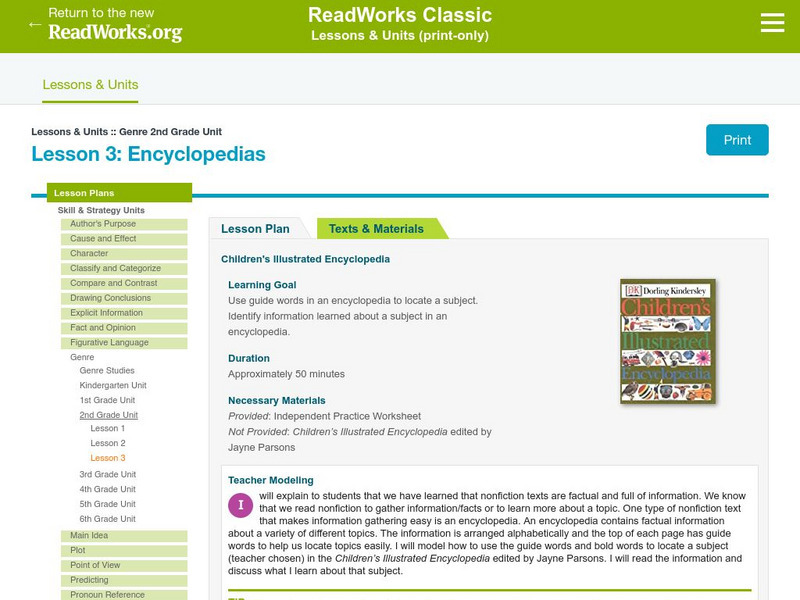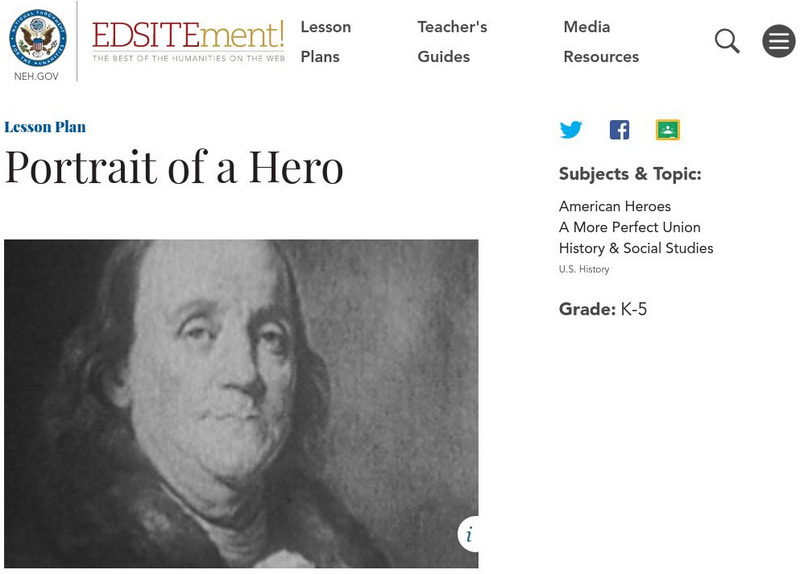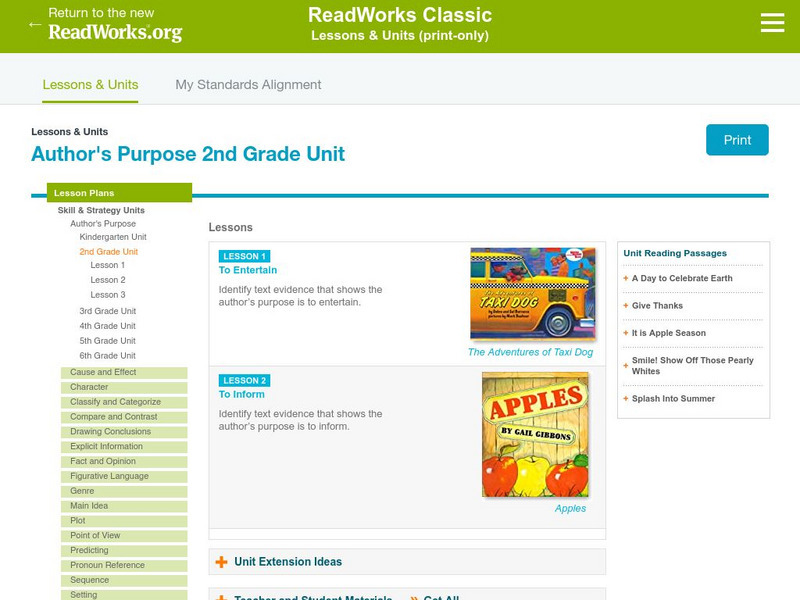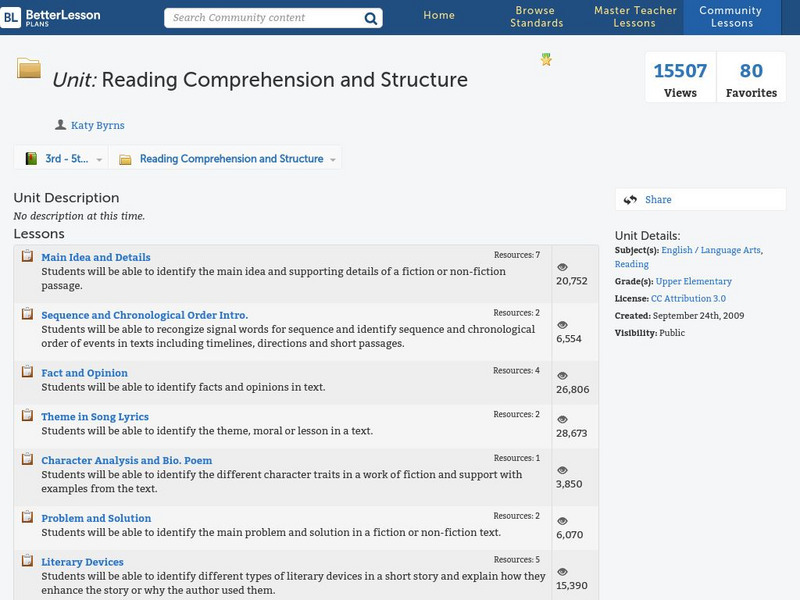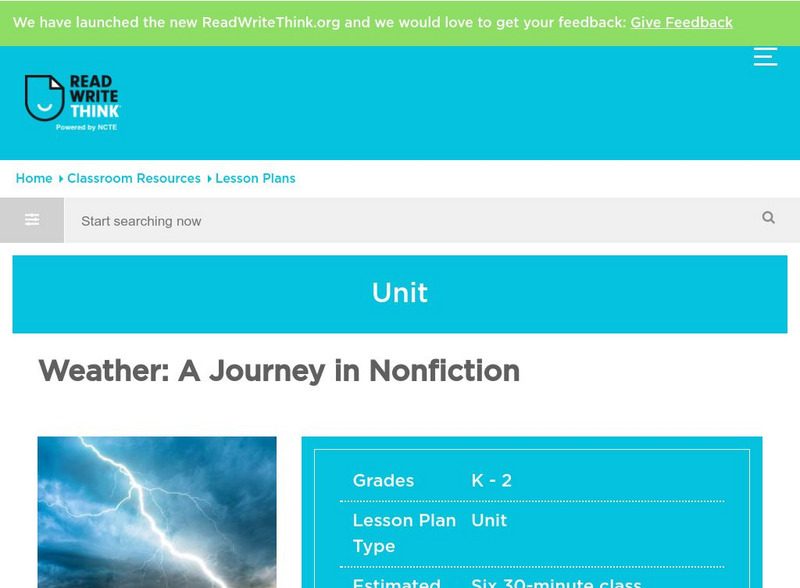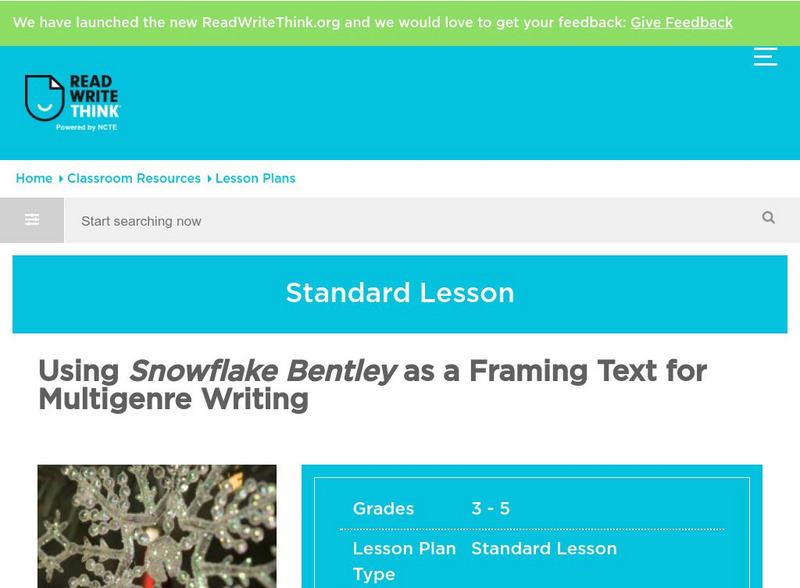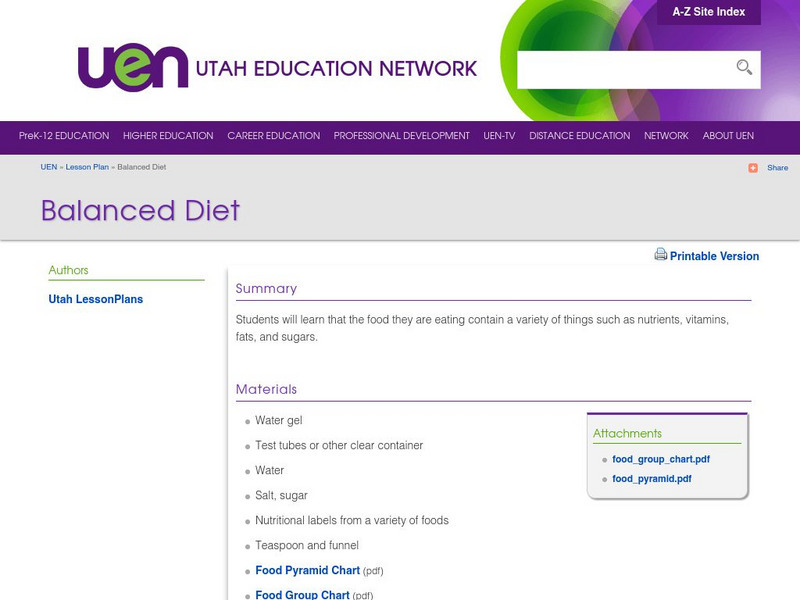Read Works
Read Works: Compare and Contrast 3rd Grade Unit
[Free Registration/Login Required] A three-lesson unit on comparing and contrasting through which students learn how to compare two items using key terms, compare and contrast two non-fiction texts on similar topics, and compare and...
Read Works
Read Works: Fact and Opinion 3rd Grade Unit
[Free Registration/Login Required] A three-lesson unit on fact and opinion through which students learn how to identify facts and opinions in different fiction genres. Students also use non-fiction texts to identify and verify facts and...
Read Works
Read Works: Main Idea 1st Grade Unit
[Free Registration/Login Required] Students learn to use titles and supporting details in both fiction and non-fiction texts in order to identify the main idea of the book in this three-lesson unit. The lessons utilize the books Animal...
Read Works
Read Works: Genre 2nd Grade Unit: Encyclopedias
[Free Registration/Login Required] A lesson in which students use the book Children's Illustrated Encyclopedia edited by Jayne Parsons to learn to locate information and find facts about a subject in an encyclopedia. Lesson includes...
National Endowment for the Humanities
Neh: Edsit Ement:portrait of a Hero
Discussing real life heroes and heroines and viewing their pictures will help students learn about reading and writing biographies. A writing rubric assessment is included in this series of activities designed to teach about heroes and...
Read Works
Read Works: Grade 2: Three Lesson Unit: Author's Purpose
[Free Registration/Login Required] A series of three lesson plans designed to teach learners to identify author's purpose including to entertain, to inform, and to persuade. Lessons are based on the books The Adventures of Taxi Dog by...
Better Lesson
Better Lesson: Shadows Shadows Everywhere!
Shadows are all around us.Students will use reading comprehension strategies to distinguish between fantasy and reality.
Scholastic
Scholastic: Nonfiction Comprehension: Making Personal and Textual Connections
This is a lesson plan to help elementary young scholars connect to nonfiction text as they read.
Scholastic
Scholastic: Teaching With Nonfiction: Teach Text Features
A brief lesson plan, this site offers an example of non-fiction text and a graphic organizer to help orient students to the features they need to use when reading for information.
Better Lesson
Better Lesson: Unit: Reading Comprehension and Structure
This unit focuses on reading comprehension and structure. It includes lessons on the main idea and supporting details, theme, sequence, fact and opinion, literary devices, character, text features, inferences, organization of nonfiction,...
Science Education Resource Center at Carleton College
Serc: Written Assignment Sessions
For this lesson, young scholars read a scientific article, answer a quiz about it, then write a summary.
ReadWriteThink
Read Write Think: Reading Informational Texts Using the 3 2 1 Strategy
Learners can count on using the 3-2-1 strategy to help them successfully comprehend and write about an informational text.
ReadWriteThink
Read Write Think: Weather: A Journey in Nonfiction
Questions about weather clear up when students use what they learned from their books to create a presentation to share with the rest of the class.
ReadWriteThink
Read Write Think: Using Snowflake Bentley as a Framing Text for Multigenre Writing
Using Snowflake Bentley as a model, students create a working definition of multigenre text and then use that definition to create their own multigenre piece about winter or another theme.
ReadWriteThink
Read Write Think: Using Technology to Analyze and Illustrate Symbolism in Night
Images have power-they can trigger memories or symbolize abstract ideas. Students put the power of images to the test as they analyze symbolism in Night and create symbolic photomontages.
Utah Education Network
Uen: Cloud, Rain, and Fog
During these three days of lessons, 2nd graders will learn about weather from the nonfiction text by asking questions, and focusing on the text features of the book.
ReadWriteThink
Read Write Think: Amy Tan's
Contains plans for five lessons that use Amy Tan's essay "Mother Tongue" to teach about nonfiction and fiction as well as engage the issue of language and identity. In addition to objectives and standards, this instructional plan...
Writing Fix
Writing Fix: Snowball Note Making and Summarizing
In this lesson, students will engage in this post-reading strategy for a nonfiction or a fiction piece. Each student will take notes on a four-square square graphic organizer about something they already knew, something they found...
ReadWriteThink
Read Write Think: Exploring Cross Age Tutoring Activities With Lewis and Clark
Interaction and adventure draws high school and elementary school students together as they analyze stories about the Lewis and Clark expedition.
Utah Education Network
Uen: Enlightening Explorations, Part Iii
This instructional activity contains the following labs: Rainbows, Refraction with Prisms, and What Color Is It? Students will study light by reading various nonfiction texts and viewing a video instructional activity. Then students will...
Utah Education Network
Uen: Balanced Diet
In this lesson, 2nd graders will learn about the components of a balanced diet. Students will analyze charts and then self-report their own foods in categories. Several fiction and nonfiction books are listed as additional resources.
Alabama Learning Exchange
Alex: Vocabulary Magic
Using the book Farmer Duck, this lesson will take words that are unknown to students and teach students how to determine their meanings. This will help open up the world of reading to students.
Alabama Learning Exchange
Alex: Play the Dewey Decimal System Game
This lesson introduces the 10 main categories used in the Dewey Decimal Classification System for non-fiction bookshelf arrangement. A slideshow will be presented to learners to help them learn details about the Dewey Decimal...
South Carolina Educational Television
Know It All: Non Fiction Text Features
Fifth graders will use non-fiction books to identify and explain how text features help them as individual readers.



